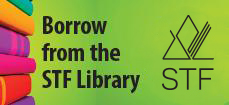Course Configurations
| (a) | Identify the costs ofowning and operating a vehicle. |
| (b) | Discuss the advantages and disadvantages of buying versus leasing a vehicle. |
| (c) | Calculate the costs of buying versus leasing using lease calculation and owner’s calculation formulas. |
| (d) | Determine an individual’s ability to afford a vehicle using strategies or guidelines such as the 20-10 rule and total loan cost. |
| (e) | Discuss the consequences of relying primarily on the monthly payment amount to determine affordability of a vehicle loan. |
| (f) | Explore finance options for vehicle loans and leasing vehicles from a variety of providers (e.g., car dealership and bank). |
| (g) | Compare the advantage and disadvantages of buying or leasing a new andused vehicle. |
| (h) | Investigate where and how (e.g., through dealerships, privately and online) vehicles might be purchased. |
| (i) | Discuss the role of a down payment in financing a vehicle purchase or lease. |
| (j) | Investigate the process of trading in a vehicle to purchase another. |
| (k) | Research how vehicles depreciate and ways to help a vehicle hold value. |
| (l) | Define the concept of negative equity and discuss situations (e.g., accident and length of ownership) that may result in negative equity on a vehicle loan. |
| (m) | Explore the consequences of trading in a vehicle with negative equity to purchase another, and doing so too frequently. |
| (n) | Research and compare insurance and warranty options for vehicles. |
| (o) | Discuss the repercussions of financing a vehicle on access to credit for future purchases. |
| (p) | Apply decision-making strategies or approaches to a variety of scenarios that include the option to purchase or lease a new or used vehicle. |










This Canadian resource supports the Financial Literacy curriculum and provides information at a suitable introductory level. The resource is organized under six headings for a total of 15 modules.
Topics covered:
- Goals, Values and Decision-making
- Getting and Earning Money
- Spending Money and Taking Control
- Borrowing Money and Using Credit
- Saving and Investing Money
- Protecting Assets and Planning for the Future.
The resource includes:
- Student Guide, English or French, free online PDF version or hard copies can be ordered at a minimal fee
- Teacher's Guide, English or French, free online version


The Indigenous Edition of Money and Youth builds on the original resource from the Canadian Foundation for Economic Education, CFEE. Damon Johnston, President of the Aboriginal Council of Winnipeg, provided guidance rooted in traditional teachings and the Seven Sacred Laws. Vanessa Everett, CEO of Economic Development with the Keewatin Tribal Council, adapted the original version by Gary Rabbior of CFEE. Input from respected individuals across Turtle Island also helped shape this edition.
Topics covered:
- Goals, Values and Decision-making
- Getting and Earning Money
- Spending Money and Taking Control
- Borrowing Money and Using Credit
- Saving and Investing Money
- Protecting Assets and Planning for the Future.
The resource includes:
- Student Guide, English, free online PDF version or hard copies can be ordered at a minimal fee
- Teacher's Guide, English, free online version

